MyolageTM – The Myofascial Release Treatment System
View a clip from the 2011 May course on youtube if not showing below.
Continuing Education Course for Massage Therapist and Manual Practitioners
“I HAVE USED YOUR TECHNIQUES TIME and TIME AGAIN with AMAZING RESULTS”
S Hargrove RMT – MyolageTM Myofascial Release Treatment Course Participant
MyolageTM
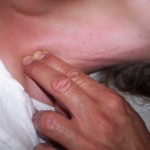
This massage therapy continuing education course in myofascial release techniques reviews the basics of lengthening and or separating layers of soft tissue from one another to improve range of motion, decrease pain and improve overall body function.
As well in this massage therapy continuing education course you are exposed to at least five different myofascial release techniques that stem from both the indirect and direct method plus other techniques.
MyolageTM is recognized as the “Grandchild” of myofascial release techniques and credits it development from the original developers of both indirect and direct myofascial release.
If you prefer smaller classes with no more than 12 participants and easy access to the instructor then this course is for you.
1. Indirect Myofascial Release -“Myolage Meld”
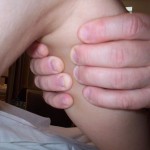
This involves a very gentle stretch. The pressure is low. As I like to say “your hands become “one” with the tissue”. I refer to this as the “MYOLAGE MELD”. This subtle approach allows the therapist to “hang out” with the client’s tissue. This is the most common and widely known myofascial release technique. Basically the therapist “hangs out”.
2. Direct Myofascial Release Technique – Myolage Direct
This is more aggressive. With this technique the practitioner uses fingertips, knuckles, forearms or elbows by applying pressure through the layers of the fascia by moving either to the head or foot. There is no movement by the client. This may lead to a burning sensation felt by the client.
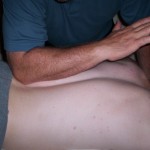
These are the two most common methods practiced by massage therapists and the more popular approaches to myofascial release in massage therapy continuing education courses.
However that being said there are other myofascial release techniques that are include in the MyolageTM treatment system.
3. “Myolage Lock” – Passive
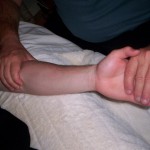
The Myolage “Lock” is a technique where pressure is applied on the muscle or connective tissue during passive movement of the tissue to impart a stretch or lengthening.
The movement is performed by the therapist while locking in on the soft tissue.
The focus is more on the stretch as compared to the pressure of the lock
In order to maximize the effect, the pressure point is relocated during the stretch to impart the force through different sections of the muscle or connective tissue.
With this technique the therapist applies pressure generally from the opposite direction of muscle while it is lengthening the proximal of the muscle.
It is passive because the client does not voluntarily contract the muscle – sometimes referred to as soft tissue release.
An example would be the therapist taking the client’s head to the right while at the same time applying an inferior pressure along the sternocleiodomastoid muscle. (SCM)
4.”Myolage Lock” – Active
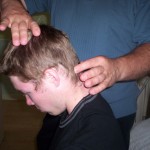
“Myolage Lock Active” is a technique where pressure is applied on the muscle or connective tissue during active movement of the tissue to impart a stretch or lengthening.
The client actively contracts the muscle For example; a client with a “tight” biceps muscle would actively straighten the arm while the therapist applies pressure in a superior direction from the elbow to the shoulder.
Therapist may use:
-Fingertips
-Knuckles
-Forearm
-Elbow
5. Myolage Direct Dynamic Release
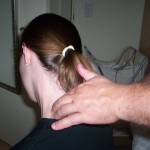
Apply pressure to the tissue in a superior or inferior direction and ask for movement from the client. As the client actively extends or flexes the particular joint in question, the therapist actively moves from distal attachment to proximal attachment or vice versa.
You can use your thumb, finger, knuckle, forearm, fist or elbow.
You work both on and in between muscle compartments.
Most direct techniques have you work on the muscle in question; however there is a need to separate compartments.
One of the best examples is separating vastus lateralis from the iliotibial band.
In the MyolageTM course you learn all these techniques plus the separating of muscles from other muscles. This is one thing that does get over looked when treating clients.
These myofascial release techniques in this massage therapy continuing education course treat:
• Back Pain
• Headaches
• Whiplash
• Pelvic Pain
• Neck Pain
• Sports Injuries
• Chronic Pain
• Disc Problems
• Migraines
• Pelvic Floor Dysfunction
• Neurological Dysfunction
• Fibromyalgia
• Chronic Fatigue Syndrome
• Adhesions
• Carpal Tunnel
• Jaw Pain (TMJ)
• Painful Scars
• Scoliosis
• Infants/Children
• Sciatica
As well as myofascial pain syndrome
This massage therapy continuing education course is a worth while investment to add to your treatment tool box.
It is approved by the CMTO for 8 CEU’s
Watch our youtube.com channel to get in idea of the different myofascial techniques taught in MyolageTM
Visit our youtube.com channel